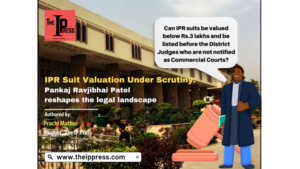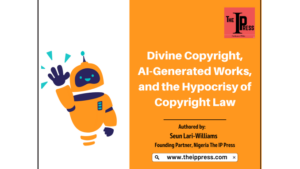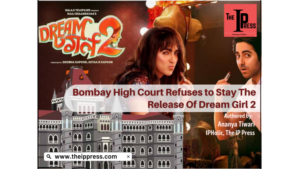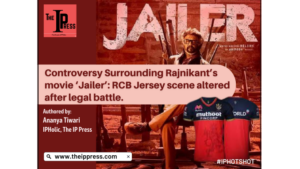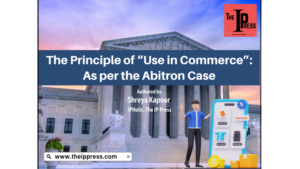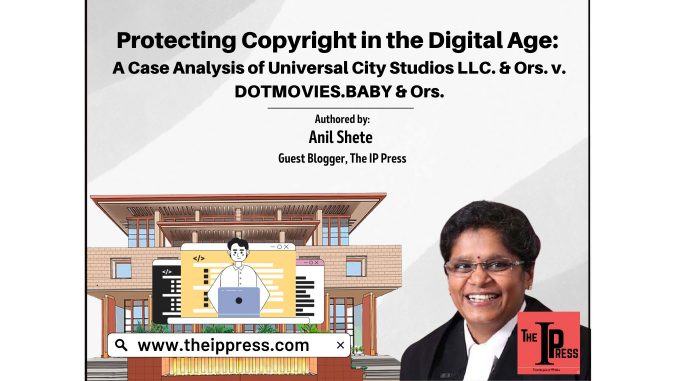

Case Citation:
CS(COMM) 514/2023 and I.A. 14120/2023, 14122/2023 in the High Court of Delhi at New Delhi
Introduction
The case of Universal City Studios LLC. and others (hereinafter referred to as “Plaintiffs”) versus DOTMOVIES.BABY and others (hereinafter referred to as “Defendants”) revolve around the unauthorized distribution and streaming of copyrighted content on various websites. The Plaintiffs established Hollywood Studios, are engaged in the production and distribution of a vast catalog of original creative content, including cinematograph films, TV series, and motion pictures. They hold copyrights over this content and invest substantial resources in its creation, production, distribution, and marketing.
The digital age has presented a significant challenge to copyright owners like the Plaintiffs due to the proliferation of websites that offer unauthorized, unlicensed, and pirated versions of their content. This ongoing infringement of copyrights not only violates the rights of content creators but also results in substantial financial losses.
Procedural History
In this case, the Plaintiffs have brought a suit against various websites (Defendants) that facilitate the unauthorized viewing, streaming, downloading, and distribution of their copyrighted content without obtaining any licenses or authorizations. These websites often operate under different names and continuously evolve to evade legal actions.
The Plaintiffs have sought an ex parte ad interim injunction to restrain the Defendants from infringing their copyrights, including future works. The Court recognized the dynamic nature of this infringement and issued a “Dynamic+ injunction” to protect copyrighted works as soon as they are created, ensuring minimal harm to the Plaintiffs.
Issues Presented
The primary issues in this case are:
- Whether the Defendants’ websites are infringing the Plaintiffs’ copyrights by distributing and streaming their content without authorization.
- Whether the Court should grant an ex parte ad interim injunction to protect the Plaintiffs’ copyrights, including future works, given the dynamic nature of online piracy.
Rules of Law
The key legal principles applied in this case include:
- Copyright Act, 1957: Provides legal protection to original creative works, including cinematograph films, and grants copyright owners exclusive rights.
- Dynamic+ Injunction: A legal remedy that allows for the immediate protection of copyrighted works, including future works, against online piracy, recognizing the dynamic nature of infringement.
Contentions of the Plaintiff
The Plaintiffs argue that the Defendants’ websites facilitate the unauthorized distribution and streaming of their copyrighted content, resulting in significant financial losses and infringing their exclusive rights under the Copyright Act. They contend that the Court should issue an ex parte ad interim injunction to protect their copyrights, considering the evolving nature of online piracy.
The Plaintiffs, comprising leading Hollywood studios, assert that they hold copyrights for a vast library of creative content, including cinematograph films, TV series, motion pictures, and more. They claim that this content is accessible and viewable on various devices and that they have invested significant resources in its creation, production, distribution, and marketing.
The Plaintiffs argue that the Defendants, through their websites, have been illegally distributing and making available copyrighted content without authorization. They contend that this unauthorized distribution not only infringes their copyrights but also causes substantial financial losses.
Contentions of the Defendants
The Defendants, operating various websites, have not provided any defense or response to the Plaintiffs’ allegations as they are unknown entities with concealed identities. Their actions are inherently unlawful as they offer unauthorized access to copyrighted content.
Analysis and Reasoning
The Court recognized the rampant online piracy and the evolving nature of rogue websites that continuously infringe copyright owners’ rights. To address this issue effectively, the Court issued a “Dynamic+ injunction” to protect copyrighted works, including future creations, as soon as they are produced. This proactive measure is essential to prevent immediate harm to the Plaintiffs and deter online piracy.
The Court’s decision is in line with global efforts to combat online piracy and protect the rights of copyright owners. It acknowledges that copyright infringement poses a severe threat to the creative industry and the economic interests of artists and content creators.
Holding and Decision
Justice Prathiba M. Singh issues an ex parte ad-interim injunction against the Defendants, restraining them from any form of streaming, reproducing, distributing, making available, or communicating to the public any copyrighted content owned by the Plaintiffs, including future works. This injunction extends to the identified websites, mirror/redirect websites, and any alphanumeric variations associated with the Defendants’ websites.
The court orders Internet Service Providers (ISPs) to block access to the identified websites (Defendant Nos. 17 to 25) within one week. Additionally, the Domain Name Registrars (DNRs) are instructed to lock and suspend the domain names of the rogue websites upon notification by the Plaintiffs. The DNRs are also required to provide registrants’ details to the Plaintiffs.
The court emphasizes the need for the injunction to be dynamic, allowing the Plaintiffs to seek protection for future works through a simplified process. If any disputes arise concerning copyright ownership, the affected parties are granted the liberty to approach the court for clarification.
Implications and Significance
This case has significant implications for the protection of copyrighted content in the digital age. The court’s decision to issue a dynamic injunction recognizes the ever-evolving nature of online piracy and aims to provide copyright owners with swift and effective means to safeguard their works.
The judgment sets a precedent for addressing online piracy and highlights the responsibility of ISPs, domain registrars, and other intermediaries in curbing copyright infringement. It underscores the importance of international cooperation to combat online piracy, as infringing websites can easily migrate across borders.
Implications and Significance
This case highlights the critical role of the judiciary in protecting copyright owners from the growing threat of online piracy. The “Dynamic+ injunction” sets a precedent for addressing the dynamic nature of copyright infringement in the digital age. It underscores the need for global cooperation and consensus to combat online piracy effectively.
Critique
The Court’s decision to issue a “Dynamic+ injunction” is a significant step in the right direction. However, it also raises concerns about the potential misuse of such injunctions and the need for a balance between copyright protection and the free flow of information on the internet.
Conclusion
The case exemplifies the ongoing struggle of copyright owners to protect their rights in the digital age. The Court’s issuance of a “Dynamic+ injunction” demonstrates its commitment to combating online piracy and safeguarding the creative industry’s interests. This decision underscores the urgency of global efforts to address this issue comprehensively and protect the economic interests of content creators.
- SEO Powered Content & PR Distribution. Get Amplified Today.
- PlatoData.Network Vertical Generative Ai. Empower Yourself. Access Here.
- PlatoAiStream. Web3 Intelligence. Knowledge Amplified. Access Here.
- PlatoESG. Carbon, CleanTech, Energy, Environment, Solar, Waste Management. Access Here.
- PlatoHealth. Biotech and Clinical Trials Intelligence. Access Here.
- Source: https://www.theippress.com/2023/10/15/protecting-copyright-in-the-digital-age-a-case-analysis-of-universal-city-studios-llc-ors-v-dotmovies-baby-ors/
- :has
- :is
- :not
- 1
- 17
- 25
- a
- About
- access
- accessible
- across
- Act
- actions
- Ad
- Additionally
- address
- addressing
- against
- age
- aims
- Allegations
- Allowing
- allows
- also
- an
- analysis
- and
- any
- applied
- approach
- ARE
- argue
- arise
- around
- Artists
- AS
- associated
- At
- authorization
- available
- Baby
- Balance
- BE
- been
- between
- Block
- Blog
- borders
- brought
- but
- by
- CAN
- case
- catalog
- causes
- challenge
- City
- claim
- combat
- combating
- comm
- commitment
- communicating
- comprising
- concerning
- Concerns
- Consensus
- considering
- content
- content creators
- continuously
- cooperation
- copyright
- copyright infringement
- Copyrights
- Court
- created
- creation
- creations
- Creative
- creators
- critical
- curbing
- decision
- defendants
- Defense
- Delhi
- demonstrates
- details
- Devices
- different
- digital
- digital age
- direction
- disputes
- distributing
- distribution
- domain
- Domain Name
- DOMAIN NAMES
- due
- dynamic
- easily
- Economic
- Effective
- effectively
- efforts
- emphasizes
- engaged
- ensuring
- entities
- essential
- established
- evolve
- evolving
- Exclusive
- exemplifies
- extends
- facilitate
- films
- financial
- flow
- For
- form
- Free
- from
- future
- given
- Global
- grant
- granted
- grants
- Growing
- harm
- Have
- High
- highlights
- hold
- Hollywood
- However
- HTTPS
- i
- identified
- identities
- if
- illegally
- immediate
- implications
- importance
- in
- include
- Including
- industry
- industry’s
- information
- infringement
- inherently
- interests
- interim
- intermediaries
- International
- Internet
- Invest
- invested
- IP
- issuance
- issue
- Issued
- issues
- IT
- ITS
- jpg
- Key
- leading
- Legal
- Liberty
- Library
- licenses
- like
- Line
- LLC
- losses
- Making
- Marketing
- means
- measure
- migrate
- minimal
- misuse
- more
- motion
- name
- names
- Nature
- Need
- New
- notification
- obtaining
- of
- offer
- often
- on
- ONE
- ongoing
- online
- only
- operate
- operating
- or
- orders
- original
- Other
- Others
- over
- owned
- owners
- ownership
- parties
- Pictures
- Piracy
- plato
- Plato Data Intelligence
- PlatoData
- poses
- posters
- potential
- Precedent
- presented
- press
- prevent
- primary
- principles
- Proactive
- process
- Produced
- Production
- protect
- protecting
- protection
- provide
- provided
- providers
- provides
- public
- raises
- recognized
- recognizes
- recognizing
- referred
- required
- Resources
- response
- responsibility
- resulting
- Results
- right
- rights
- Role
- safeguarding
- Seek
- Series
- service
- service providers
- Sets
- severe
- should
- significant
- simplified
- Soon
- sought
- Step
- streaming
- Struggle
- studios
- substantial
- such
- Suit
- Suspend
- SWIFT
- that
- The
- their
- Them
- These
- they
- this
- threat
- Through
- to
- tv
- TV Series
- unauthorized
- under
- underscores
- Universal
- unknown
- upon
- urgency
- variations
- various
- Vast
- Versus
- viewing
- websites
- week
- with
- within
- without
- works
- zephyrnet

